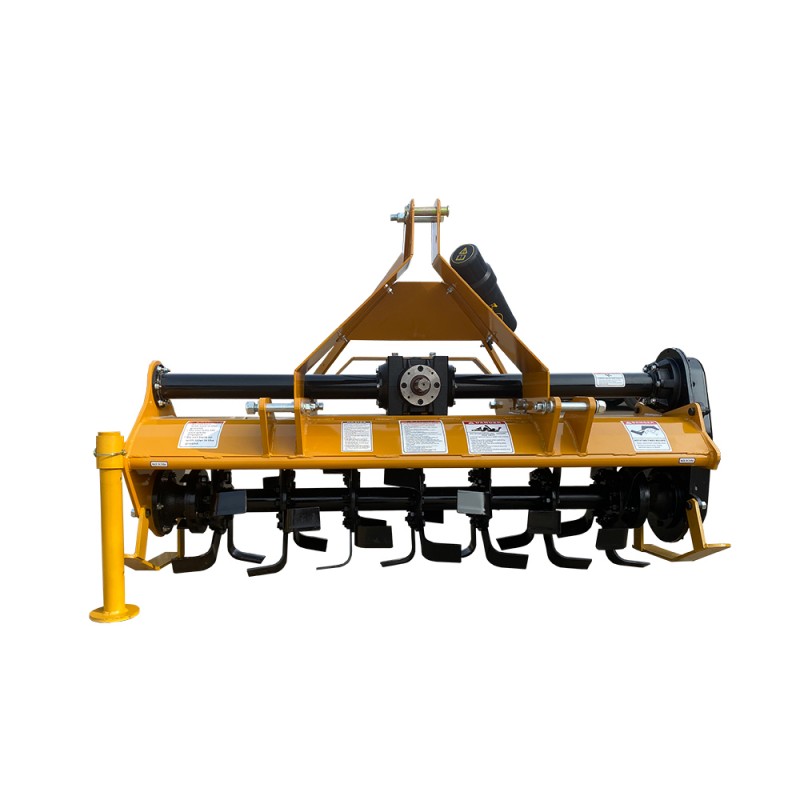What Makes a Fertilizer Spreader the Key to Modern Precision Farming?
2025-11-14
A fertilizer spreader is a precision agricultural tool designed to distribute fertilizer, seed, lime, or granular materials across farmland with consistent coverage and controlled output. Modern farming methods rely heavily on accurate nutrient placement, and a fertilizer spreader plays a central role in delivering uniform distribution that supports crop health, boosts yield, and reduces material waste.
The core purpose of a fertilizer spreader is to improve efficiency through controlled spreading width, adjustable flow mechanisms, and calibrated metering systems. Farmers increasingly require accurate dosage control to meet the demands of high-yield crop varieties and sustainable cultivation. The spreader contributes to this goal by applying nutrients evenly, reducing over-fertilization, preventing environmental runoff, and minimizing labor intensity.
Below are the key product parameters commonly associated with a modern agricultural fertilizer spreader:
Product Parameters (Example Specification Table)
| Parameter | Specification |
|---|---|
| Hopper Capacity | 25–120 Liters (Handheld/Push Models) / 300–1400 Liters (Tractor-Mounted Models) |
| Spreading Width | 2–4 m (Manual) / 6–18 m (Ground-Driven) / 12–36 m (PTO-Driven) |
| Material Compatibility | Fertilizer, Seeds, Salt, Lime, Pellets, Granules |
| Adjustment Mechanism | Flow Gate Dial / Lever-Controlled Aperture / PTO Speed Regulation |
| Driving Mode | Manual Push, Tow-Behind, Tractor PTO, ATV-Mounted |
| Hopper Material | Polyethylene / Stainless Steel / Powder-Coated Steel |
| Output Calibration | Gradual Flow Control with Scale Markings |
| Wheel and Frame Structure | Anti-Rust Steel Frame, Pneumatic or Solid Rubber Wheels |
| Application Rate | 5–300 kg/ha (Model Dependent) |
| Weight | 6–45 kg (Manual) / 80–260 kg (Agricultural Models) |
These parameters influence performance, spreading consistency, and long-term durability. They also determine which farming environments—small-scale gardening, medium fields, large commercial farms, or industrial agricultural operations—suit the spreader best.
Why Is a Fertilizer Spreader Essential for Achieving Efficient and Sustainable Crop Management?
The fertilizer spreader is widely valued for its contribution to crop uniformity, input cost savings, and environmental protection. To understand why it holds such importance in modern agriculture, it is necessary to analyze its advantages and the strategic benefits it brings to farming operations.
Why Does Precision Matter?
Uniform nutrient distribution ensures that crops grow consistently, reducing patchy development and nutrient deficiency stress. Uneven applications can result in excessive vegetative growth, lodging, or poor grain filling. A fertilizer spreader eliminates these inconsistencies through calibrated metering, defined spreading width, and improved granule dispersion control.
Why Does It Improve Resource Management?
Fertilizer costs represent a significant portion of agricultural expenditure. Optimizing fertilizer usage reduces waste and operational expenses. The spreader contributes to resource conservation by:
-
Ensuring every granule is utilized effectively
-
Reducing losses due to wind drift
-
Minimizing overlap and double application
-
Lowering the cost per hectare
Why Is It Important for Sustainable Agriculture?
Modern agricultural standards emphasize sustainability and reduced environmental impact. Over-fertilization can lead to nutrient leaching, soil acidification, water pollution, and greenhouse gas emissions. A fertilizer spreader helps achieve compliance with regulatory nutrient management guidelines through controlled and measurable application rates.
Why Does It Enhance Labor Efficiency?
Hand broadcasting is inefficient and inconsistent. The spreader allows:
-
Faster application
-
Reduced manual effort
-
Less fatigue during field operations
-
Higher productivity during peak seasonal periods
Why Do Different Models Suit Different Farming Scenarios?
Different terrains and crop types demand tailored equipment configurations.
-
Manual Push Spreaders: suitable for gardens, nurseries, and small plots
-
Tow-Behind Models: ideal for orchards, mid-sized fields, sports turf
-
PTO-driven Spreaders: designed for large-scale commercial fields requiring wide-width spreading
Farmers select models based on field size, crop type, fertilizer form, and frequency of application.
How Does a Fertilizer Spreader Operate, and How Can It Optimize Field Productivity?
Understanding how a fertilizer spreader works helps in selecting the appropriate model and achieving maximum benefits. The mechanical design is simple yet effective, integrating calibrated openings, agitators, and a spreading disc to generate consistent flow and distribution.
How Does the Spreading Mechanism Work?
The spreading mechanism involves several steps:
-
Granules enter the hopper.
-
The flow gate adjusts the fertilizer output.
-
Agitation prevents clogging inside the hopper.
-
Centrifugal force from the spinning disc distributes the fertilizer.
-
Deflectors or vanes control the spreading width and direction.
How Is Application Rate Controlled?
The rate is controlled by:
-
The aperture opening size
-
Ground-driven wheel rotation
-
PTO-driven rotor speed
-
Calibration settings tailored to fertilizer density
A calibration test ensures accurate output before field operation.
How to Use a Fertilizer Spreader Correctly?
Proper use includes:
-
Checking moisture content of fertilizer to avoid clumping
-
Adjusting the flow gate before starting
-
Maintaining consistent walking or tractor speed
-
Operating in straight-line passes with slight overlap
-
Cleaning after each use to avoid corrosion
How to Maintain a Fertilizer Spreader for Long-Term Performance?
Maintenance steps include:
-
Lubricating moving parts regularly
-
Cleaning fertilizer residues to prevent rust
-
Tightening bolts and frame components
-
Inspecting the hopper and disc for cracks
-
Replacing worn-out vanes when spread pattern shifts
Proper care significantly extends the product lifespan and protects the machine’s operational accuracy.
Future Trends, Market Direction, and FAQs About Fertilizer Spreaders
The global agricultural equipment market is experiencing rapid transformation driven by mechanization, smart farming technology, sustainability requirements, and increased global food demand. Fertilizer spreaders are undergoing modernization to match these evolving needs.
Future Trends in Fertilizer Spreader Development
(1) Intelligent Precision-Control Systems
Digital sensors, GPS guidance, and variable-rate technology are becoming integrated into advanced models. These improvements allow:
-
Real-time application rate adjustments
-
Field-mapping with nutrient data
-
Automatic spread pattern optimization
Such innovations ensure that fertilizers are applied precisely based on soil conditions and crop requirements.
(2) Enhanced Durability for Harsh Agricultural Environments
Future models emphasize long-lasting materials such as corrosion-resistant steel, high-density polyethylene, and sealed gearboxes. These upgrades improve reliability in wet, humid, or chemically reactive conditions.
(3) Energy-Efficient Power Transmission
Energy-saving designs reduce fuel consumption and improve PTO efficiency. Ground-driven spreaders are also benefitting from low-resistance bearings and lightweight frames.
(4) Multi-Functional Application
Manufacturers are developing spreaders capable of handling:
-
Fertilizers
-
Seeds
-
Lime
-
Ice-melt salts
-
Micro-granules
This multi-purpose functionality improves return on investment, allowing farmers to use a single machine for multiple field tasks.
(5) Environmentally Focused Engineering
Regulatory pressure is increasing adoption of controlled-release fertilizers and precise application machinery. Future spreaders will include:
-
Low-drift dispersion systems
-
Reduced emission components
-
Advanced metering gates to limit nutrient loss
These innovations support environmental stewardship and future-proof agricultural operations.
Common FAQs About Fertilizer Spreaders
Q1: How to choose the right fertilizer spreader for different field sizes?
A suitable fertilizer spreader depends on acreage, terrain, output capacity, and fertilizer type. Small gardens benefit from manual or handheld units with 2–4 meter spread width. Medium-sized farms typically require tow-behind models with adjustable flow settings and 6–18 meter widths. Large commercial farms rely on tractor-mounted or PTO-driven spreaders capable of delivering 12–36 meter coverage with high-volume hoppers. Evaluating the field layout, slope, and operational frequency helps determine the most efficient model.
Q2: How to ensure accurate fertilizer distribution during operation?
Accurate distribution requires a combination of calibration, consistent travel speed, and correct aperture settings. Before field application, the spreader should undergo a calibration test by measuring output over a defined distance. Using dry, free-flowing fertilizer prevents clogs and maintains even granule flow. Operators should travel at a controlled speed, maintain straight-line passes, and allow slight overlap to avoid missed stripes. Regular inspection of vanes and discs ensures that the spreading pattern remains uniform across the field.
Why Fertilizer Spreaders Will Continue to Guide the Future of Agricultural Efficiency?
Fertilizer spreaders have become essential tools for both small-scale growers and large agricultural enterprises due to their precision, efficiency, and ability to reduce operational costs. They support modern agricultural strategies by offering uniform nutrient distribution, sustainable fertilizer use, and improved crop performance. As farming continues to evolve toward digital integration and sustainable practices, the fertilizer spreader will remain an indispensable instrument in the agricultural machinery lineup.
The contribution of high-quality manufacturing brands such as Harvester continues to strengthen the global agricultural equipment market by delivering durable, reliable, and high-performance fertilizer spreaders aligned with the demands of modern farming. To inquire about customized specifications, technical details, or bulk purchasing solutions, Contact Us for professional assistance and product support.





